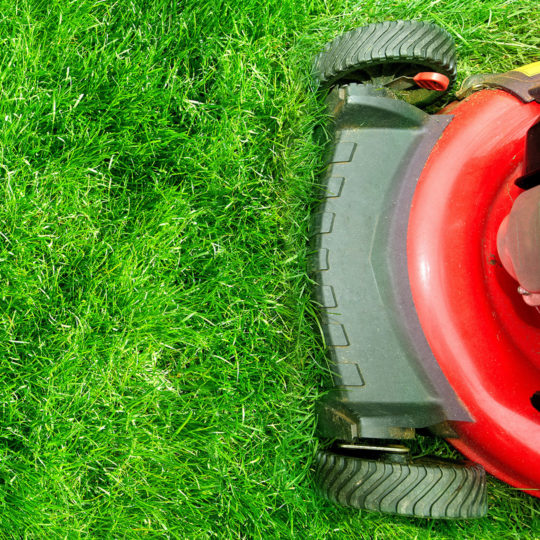Make a Plan for Mowing Your Lawn
What to do Now & Later
Posted
March 17, 2022

It may not be time to start mowing your lawn yet, but it’s never too early to plan and prep. If you’re properly prepared once the time is right, you’ll be rewarded with a lush lawn to last the season. Here are some things to focus on in your plan for mowing your lawn.
A Plan for Mowing Your Lawn
Not only does mowing your lawn help keep it look clean and neat, but it also motivates it to grow strong and healthy—when you do it the right way. This is where a plan comes in. Not having a plan or knowing the proper way to mow may leave your lawn dry, diseased, and dead. Here’s what to focus on now and what to plan for once your grass starts growing again.
What to do Now:
- Sharpen the blades. Even if you’re not ready to mow yet, you can help ensure the job is done right by cleaning and sharpening the mower blades. You don’t want to transfer and spread any lawn disease or tear the grass with dirty, dull blades. Tune-up your mower once a year and continue to clean off the blades after every use. Not only will your mower run better, but your lawn will look lusher too.
- Spread grass seeds. If you’ve already got dead spots of grass or you want to refresh your lawn, you can spread grass seeds once the ground thaws. Wait until this seed sprouts a few inches before mowing it. Trim fresh grass higher than normal so you don’t shock the brand new blades.
- Don’t make a schedule. A plan is different than a schedule. You should plan to cut your grass when it’s high enough to trim. You shouldn’t set a schedule to cut it every Saturday afternoon. Only cut grass that’s tall enough. Constant cutting may result in grass that’s too short.
What to do Later:
Once the growing season starts and your grass is tall enough to trim, it’s time to rev up that mower and keep these tips in mind.
- Mow when it’s dry. Cutting wet grass is dangerous for you and your lawn. Slick blades are a slipping hazard and more prone to tearing rather than cutting clean. Wet blades can clog up your mower, making it less efficient. Freshly cut wet grass is also more prone to disease. The best time to mow your lawn is early evening when the grass is dry and temperatures are low.
- Set the blades high. Mow at the highest setting for your grass type. You only want to cut the top third of the grass at once. Longer grass blades promote deeper root development, shade the soil, and prevent weed seeds from sprouting.
- Vary the pattern. Mowing the lawn may start to feel routine, going in the same path time after time. Switch it up for your sanity and the lawn’s benefit. Mowing in the same direction can flatten grass and form ruts in your lawn. Mowing in a different direction for grass that stands up tall. Just remember, mow forward whenever possible and side to side on a slope.
- Leave the clippings. One less thing to worry about! Grass clippings act as a natural fertilizer when they break down and return nutrients to the soil. This is one more reason not the trim too much. Smaller clippings break down faster. Larger clippings smother growing grass. If you insist on bagging, at least throw the clippings in a garden or compost to make them useful.
- Dress accordingly. To help protect yourself when you mow, wear closed-toe shoes and sunglasses or other eye protection for projectile debris. You may even want to wear a hat, long sleeves, and pants if you’re prone to sunburn or mowing around possible poison ivy or ground wasps.
For more advice on properly mowing your lawn and how to make your yard the best it can be, contact the specialists at Cardinal Lawns today.
Special Offer for New Customers
Two Free Lawn Care Treatments
Hurry! Offer Expires May 15, 2024